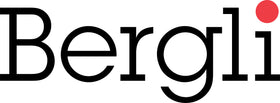A Glimpse Behind the Myths
Picture: Clare O'Dea (c) Elaine Pringle Photography
We are big fans of our author Clare O'Dea. So we were very excited to interview her on the new edition of her very successful book The Naked Swiss. Learn more in the Q&A below.
1. Why are there so many myths about the Swiss?
Every country builds some kind of reputation over time. In former centuries the Swiss were famous for their mercenaries and mountain passes and not much else. I would say the growth of the tourist industry in the nineteenth century started off the whole mystique of Switzerland. If you look at the posters of that time, it was marketed as a place apart, one that could offer luxury and unspoilt nature. Many writers spent time in Switzerland and spread the word.
Nowadays so many developments of global relevance happen in Switzerland, from peace talks to banking scandals. The quality of life scores are almost too good to be true. People are curious about the success and they look for simple explanations, hence the myths.
2. How true are these myths?
They all begin with some kernel of truth but quickly get padded out with half-truths and exaggerations. My approach in the book is not to declare every stereotype a myth. What I do is raise questions, provide some evidence and analysis. The reader will have his or her own perspective to add to the mix. In the end you have something more useful than a snap judgment.
3. Which myths make the Swiss look bad and which make them look good?
Bearing in mind that we are talking about possible myths, some are clearly negative. The notion that the Swiss are crooked bankers has enduring power. With all the talk about the 1 per cent, austerity for the poor and tax evasion for the rich, this image of Switzerland enabling global inequality is damaging. The Swiss record in the Second World War is also something that people hold against the Swiss.
Swiss achievements in living standards, neutrality and democracy do a lot to make them look good.
4. How can you write about ‘the Swiss’ considering that the country is made up of four different language groups, not to mention generations of immigrants from around the world?
With difficulty! The Swiss have a very diverse society which is why I spend the first chapter checking the “myth” that the Swiss are actually Swiss. But whatever the cultural and linguistic differences of the people, Switzerland did not turn out how it is today by accident. Certain values and characteristics have emerged and newcomers have, by and large, adopted them. Self-determination is important in Switzerland, essential for a small country buffeted by empires on all side. There is also a rejection of top-down rule within the country, as seen in the direct democracy system. I think the harsh terrain and winters also helped foster the work ethic. Long-term prosperity has also made people used to high standards, even new residents quickly notice this effect.
5. You refer to ‘the Swiss’ but you’re Swiss now yourself. Why not ‘we’?
Good catch! I was freshly naturalised when I wrote the book and the truth is I will never feel 100 per cent Swiss because I lived the first two thirds of my life in Ireland. There are all sorts of complications that come with life as an immigrant. Accepting a new country as home is a bit like accepting a new step-parent. No matter how nice they are …
6. How is the second edition different from the first?
The statistics and some current events have been updated in the second edition. But the main difference is that I have written a new chapter about the Swiss relationship with the European Union, which is a very interesting case study for any country that might be experiencing EU relationship troubles. Ahem. The upshot is that the Swiss model is deeply entwined, impossible to replicate and about to reach its use-by date.
To learn more about Clare, be sure to follow her on her blog, on Twitter, and on facebook!

